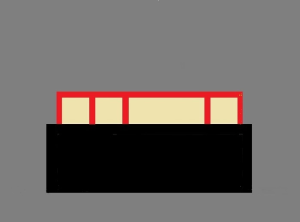 Designing Buildings Wikipedia (DBW) – host platform for IHBC’s Conservation Wiki – has featured an introduction to party walls, rights of light and permitted development rights (PDR).
Designing Buildings Wikipedia (DBW) – host platform for IHBC’s Conservation Wiki – has featured an introduction to party walls, rights of light and permitted development rights (PDR).
image: DBW
DBW writes:
Many landlords are putting in place plans to add additional storeys to properties in town centre locations following changes to Permitted Development Rights. This replaces the need for landlords to apply for planning consent to build upwards. However, these new planning rights do not provide complete freedom and landlords tempted by the financial rewards of increased lettable space are advised to familiarise themselves with other relevant legislation.
Party walls and PDR
Would-be developers should be aware that although planning consent may no longer be required, party wall legislation remains in place. Any upwards extension has the potential to impact on the structure and fabric of a neighbouring property and therefore, a building owner must serve notice to affected neighbours under the Party Wall etc. Act 1996. The Act requires two months’ notice to enable the neighbouring owners (freehold and/or leasehold) to either agree or dissent to the works. At this point an appointed party wall surveyor must undertake a schedule of condition of the neighbouring properties to provide effective dispute resolution.
Importantly, landlords should clarify the technical aspects of an extension. For example, if the building works result in alterations to a leaseholder’s ceiling (such as to embed a steel structure) their rights will be affected. If the extension is built onto a parapet, party wall rights may not be an issue but other issues – such as rights to light, the impact on services and any disruption caused during construction – may require consideration. Many residents of top floor flats assume that they have rights over roofs. But while they may have access, they do not necessarily have protected rights. Skylights may be similarly affected.
Rights of light and PDR
In the absence of a planning process to scrutinise projects that will add to building heights, the issue of rights of light becomes a very serious consideration, and one with significant consequences. Because daylight and sunlight assessments are a component of a planning application, they are currently required at an early stage in the process. The planning system also necessitates that local residents are consulted on a planning application, allowing those with legitimate concerns to assert their point of view. With this step removed, developers could potentially proceed unaware of any objections – resulting in building works then being halted through an injunction either during the process or post-completion.
So while developers might look set to gain from the opportunity to create additional storeys, in reality the situation is precarious. Without the stringent procedures and ultimately the reassurance that the planning system offers, developers could potentially embark on building works and only on completion suffer significant consequences. There are many examples of developers of extensions being ordered to reverse changes, not because of planning issues, but because of the sometimes more opaque requirement of party wall and rights of light legislation. An inevitable consequence of the extension of Permitted Development Rights will be an increase in the number of both investigations and claims. Developers are advised to seek professional advice at an early stage to avoid the significant expense of having to pull down an extension and begin again.
See more link on specifics at:
- Avoiding planning permission pitfalls.
- Party Wall Act.
- Permitted development.
- Planning permission.
- Refurbishment.
- Renovation.
- Rights to light.
Designing Buildings Wiki is the only industry-wide, cross-discipline forum for finding and sharing information: See quick introduction to designing buildings wiki and Subscribe
See more IHBC background and guidance on CPD and on how you might use Context and other CPD resources, including DBW.

